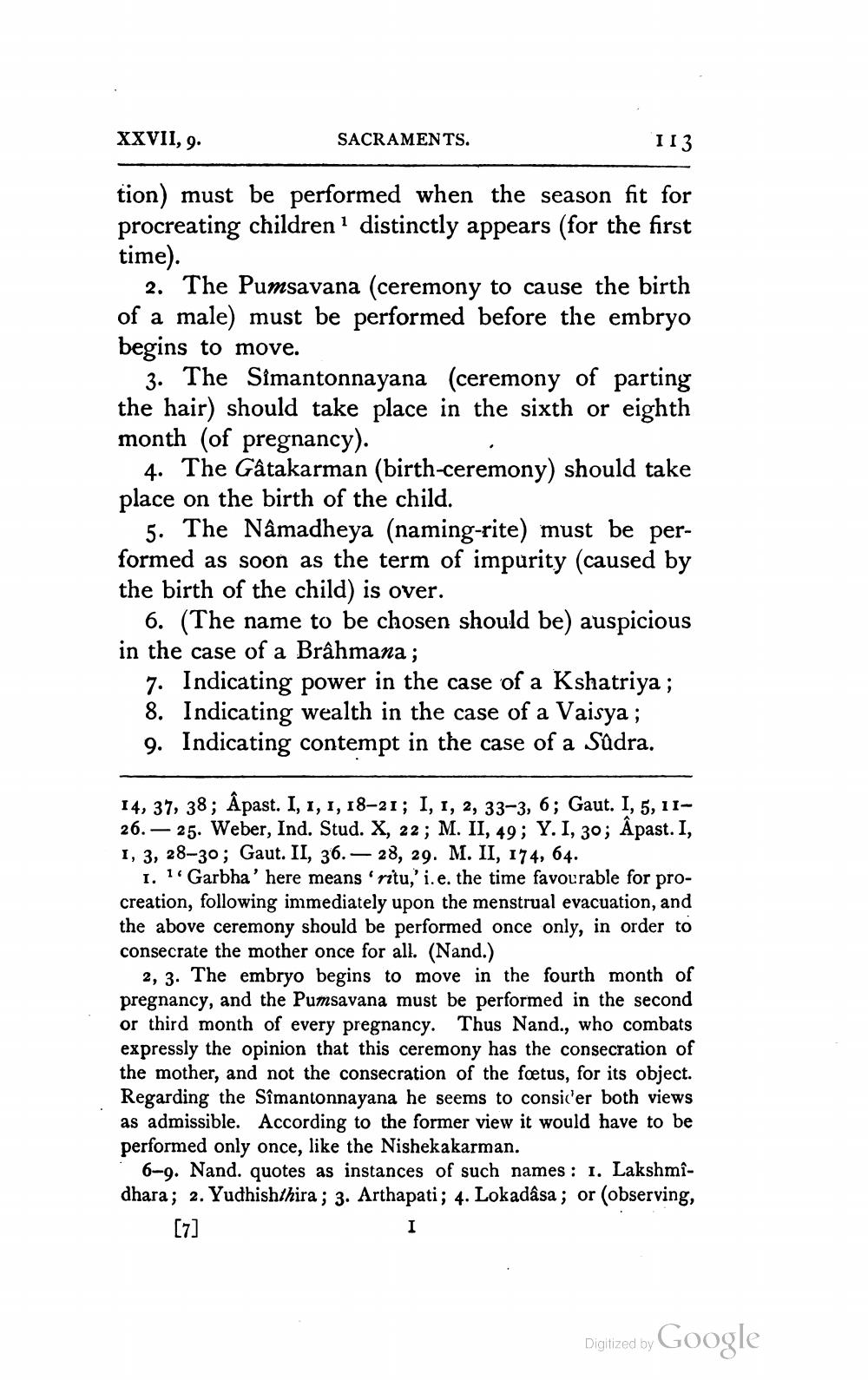________________
XXVII, 9.
113
tion) must be performed when the season fit for procreating children1 distinctly appears (for the first time).
2. The Pumsavana (ceremony to cause the birth of a male) must be performed before the embryo begins to move.
3. The Simantonnayana (ceremony of parting the hair) should take place in the sixth or eighth month (of pregnancy).
4. The Gâtakarman (birth-ceremony) should take place on the birth of the child.
5. The Nâmadheya (naming-rite) must be performed as soon as the term of impurity (caused by the birth of the child) is over.
6. (The name to be chosen should be) auspicious in the case of a Brahmana;
SACRAMENTS.
7. Indicating power in the case of a Kshatriya; 8. Indicating wealth in the case of a Vaisya; 9. Indicating contempt in the case of a Sûdra.
14, 37, 38; Âpast. I, 1, 1, 18–21; I, 1, 2, 33–3, 6; Gaut. I, 5, 11– 26.-25. Weber, Ind. Stud. X, 22; M. II, 49; Y. I, 30; Âpast. I, 1, 3, 28-30; Gaut. II, 36.- 28, 29. M. II, 174, 64.
-
I. 1 Garbha' here means 'ritu,' i. e. the time favourable for procreation, following immediately upon the menstrual evacuation, and the above ceremony should be performed once only, in order to consecrate the mother once for all. (Nand.)
2, 3. The embryo begins to move in the fourth month of pregnancy, and the Pumsavana must be performed in the second or third month of every pregnancy. Thus Nand., who combats expressly the opinion that this ceremony has the consecration of the mother, and not the consecration of the foetus, for its object. Regarding the Sîmantonnayana he seems to consider both views as admissible. According to the former view it would have to be performed only once, like the Nishekakarman.
6-9. Nand. quotes as instances of such names: 1. Lakshmîdhara; 2. Yudhish/hira; 3. Arthapati; 4. Lokadâsa; or (observing,
[7]
I
Digitized by Google




